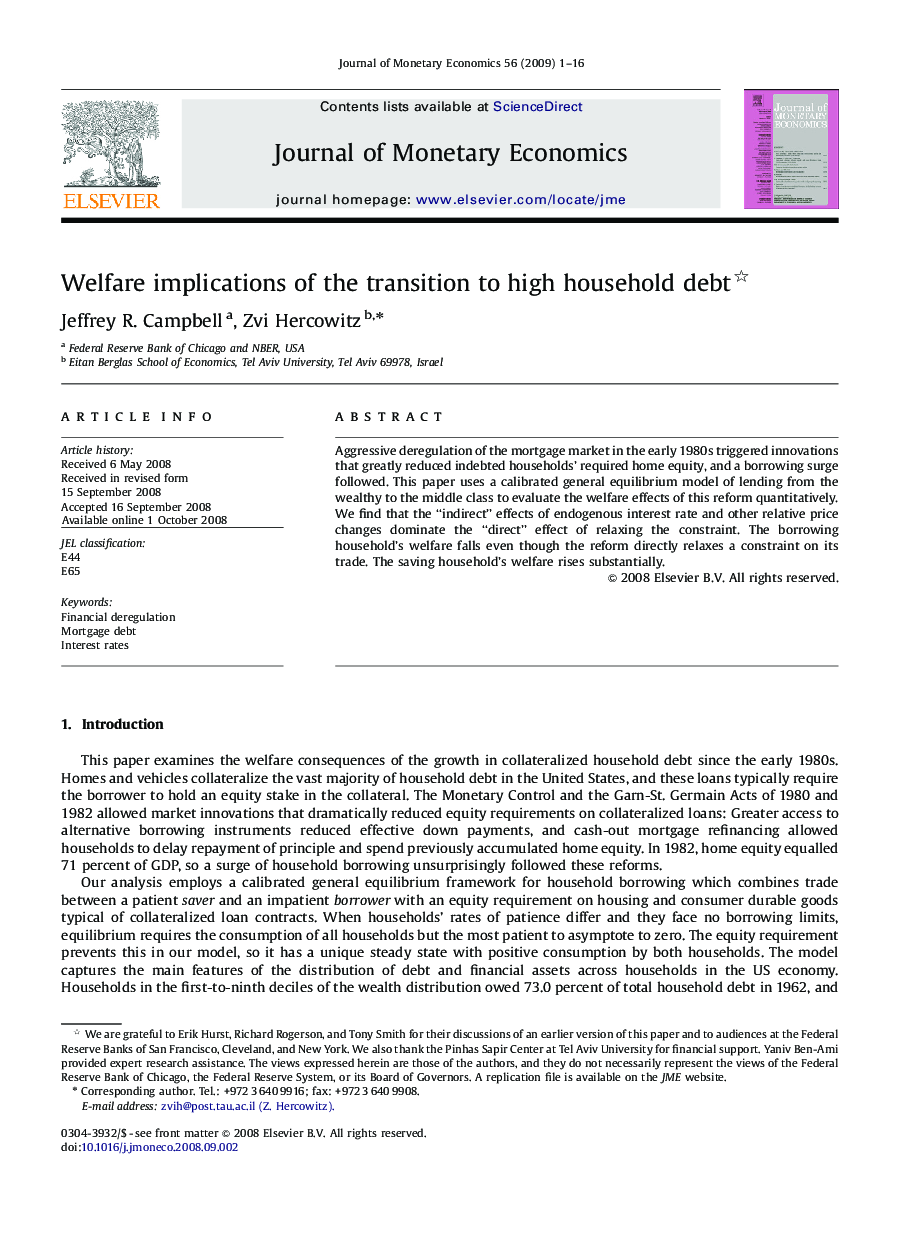| Article ID | Journal | Published Year | Pages | File Type |
|---|---|---|---|---|
| 967583 | Journal of Monetary Economics | 2009 | 16 Pages |
Abstract
Aggressive deregulation of the mortgage market in the early 1980s triggered innovations that greatly reduced indebted households' required home equity, and a borrowing surge followed. This paper uses a calibrated general equilibrium model of lending from the wealthy to the middle class to evaluate the welfare effects of this reform quantitatively. We find that the “indirect” effects of endogenous interest rate and other relative price changes dominate the “direct” effect of relaxing the constraint. The borrowing household's welfare falls even though the reform directly relaxes a constraint on its trade. The saving household's welfare rises substantially.
Related Topics
Social Sciences and Humanities
Economics, Econometrics and Finance
Economics and Econometrics
Authors
Jeffrey R. Campbell, Zvi Hercowitz,
